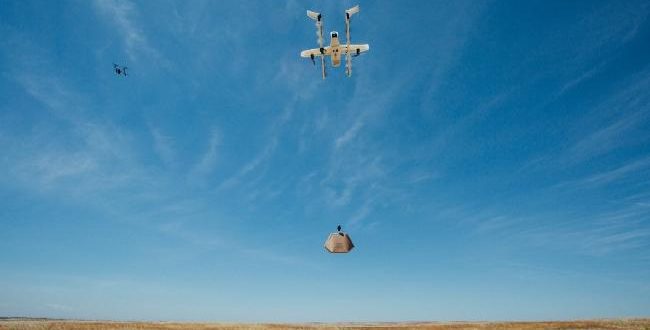Google X has demonstrated sky management technology that one day will allow thousands of drones to crisscross the sky delivering goods to customers.
The technology is necessary if the dream of drone delivery is to be realised. Demonstrations so far of a single drone delivering a pizza across town being controlled by a single operator is unsustainable on a grand scale. The huge number of drone pilots needed, the clustering of airspace, and the likelihood of collisions, are three issues.
Regulators too are yet to grapple with how they will manage large numbers of unmanned aircraft traversing the skies of the future.
To address this, Google X, the company’s secretive ‘moonshot factory’ run by parent Alphabet, has publicly demonstrated software that allows one person to operate a number of drones, with collision avoidance and rerouting key features of the system.
It’s unclear how Alphabet plans to leverage its UTM system commercially in future. But it does offer competition to Amazon’s Prime Air Delivery which aims to get packages to customers in 30 minutes or less using drones. Google X seems keen to be at the frontier of development.
It said it was looking to work with other operators and manufacturers to understand what capabilities its sky management platform should offer.
Importantly, Google X conducted the public test with NASA and the Federal Aviation Administration — the US air regulator — participating. The test took place at an FAA facility.
For its demonstration, Google X used aircraft from its Project Wing, which are designed to fly pre-planned routes on demand using sensors and software to detect and avoid each other in real time. But Google’s Unmanned Air Traffic Management (UTM) seeks to go much further, offering overall drone management.
“During yesterday’s tests, we showed that our traffic management platform can manage the complex flight paths of multiple (drones) at the same time,” said James Ryan Burgess, co-lead of Project Wing.
“This is an important step that paves the way to a future where many (drone) operators can fly safely together. It also makes it possible for a single operator — a person or organisation — to fly multiple aircraft simultaneously.”
Google is by no means the first organisation to develop such a system. NASA showed off its own drone navigation system in 2015 and that year hosted a three-day convention so that participants could understand the challenges of a sky filled with drones.
These systems will be important in agriculture where farmers operate fleets of drones to spray crops, seek out plant diseases and inspect their land.
“If aerial delivery is to become a useful part of everyday life, we’ll need a UTM system to manage the increasing quantity of UAS traffic in the sky — so we’ve gotten started building one that will work for Wing and for other organisations that need to manage fleets of potentially thousands of aircraft,” Google X says.
The test involved a single operator controlling the delivery of three packages at the same time as two Intel Aero drones and a DJI Inspire drone were conducting automated search and rescue missions.
“Operators have historically had to steer their aircraft away from obstacles manually; instead, we demonstrated yesterday that our UTM platform can automatically manage the flight paths of all these different types of UAS (unmanned aerial systems) planning new, clear routes for each aircraft if and when conflicts arise,” Mr Burgess said.
It was the first time Project Wing had demonstrated the platform.
Reader comments on this site are moderated before publication to promote lively and civil debate. We encourage your comments but submitting one does not guarantee publication. We publish hundreds of comments daily, and if a comment is rejected it is likely because it does not meet with our comment guidelines, which you can read here. No correspondence will be entered into if a comment is declined.





